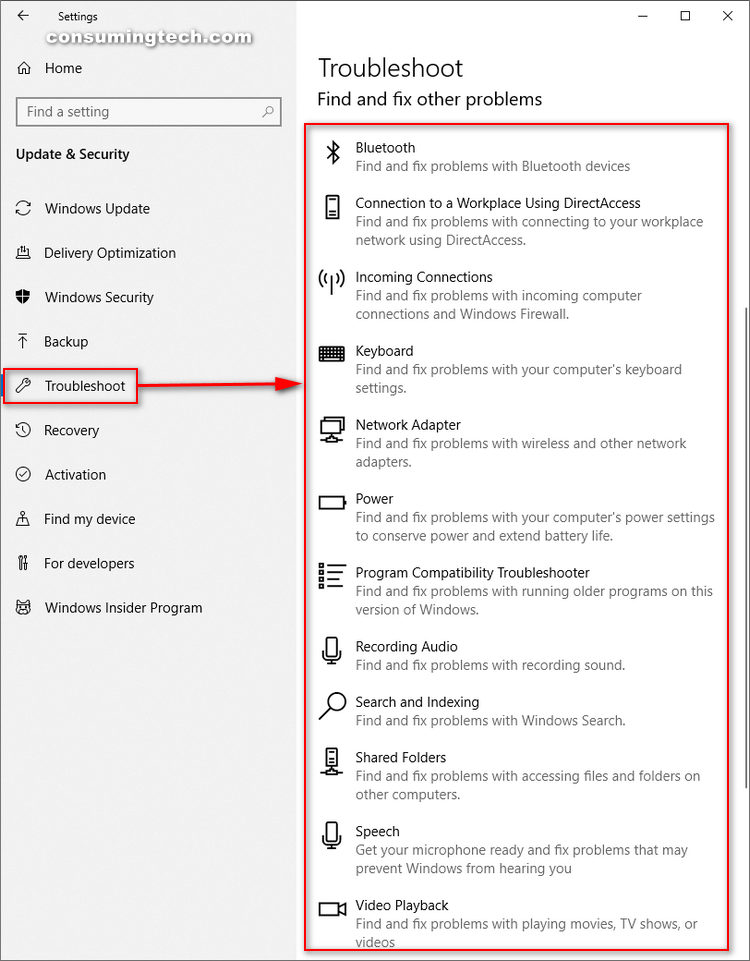Last Updated on December 24, 2022 by Mathew Diekhake
If you’ve ever got a problem with the Windows 10 operating system, one of the first things you should check is running an appropriate troubleshooter to see if Windows can automatically detect and solve the problem.
Because troubleshooters didn’t always work for people and because some people never knew the troubleshooters existed, not as many people were using them as Microsoft had hoped. Windows 10 build 17704 brought with it a new feature for automatically applying recommended troubleshooting; and starting from Windows 10 build 18305, recommended troubleshooting was fully functional.
The following tutorial demonstrates how to turn on and off the automatic troubleshooting when you’re using a version of the Windows 10 operating system starting from Windows 10 build 18305.
How to Turn On/Off Automatic Recommended Troubleshooting in Windows 10
Here is how you can turn on and off the automatic recommended troubleshooting from the Settings application in Windows 10:
1. Open the Settings app and then click on the Privacy icon from the main Windows Settings menu.
Note: If you’re using a version of Windows 10 between build 17704 and 18305, you need to click on the Update & Security > Troubleshoot and then toggle on the switch for Recommended troubleshooting instead.
2. From the Privacy menu, click on Diagnostics and feedback, and then from the right side of the same window under the Recommended troubleshooting heading, click on the drop-down menu to select how you would like Microsoft to react to troubleshooting. The three available options are as follows:
- Fix problems for me without asking
- Tell me when problems get fixed
- Ask me before fixing problems
Update: Starting from Windows 10 build 18262, Microsoft has decided to automatically fix problems that they know how to fix and detect. Now you can head to Update & Security > Troubleshoot and then click on the category that you’re experiencing problems with—for instance Keyboard, Bluetooth, Search and indexing, so forth—and Microsoft will do what it can to automatically fix the problems for you without you having to take any further action.
That’s all.
(This article was last updated on May 22, 2019.)
Related Tutorials

